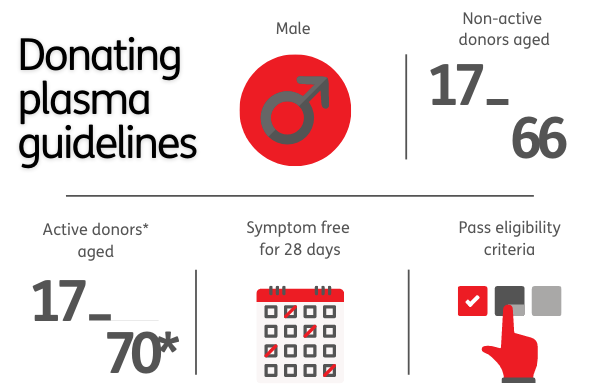
A small amount is returned to the donor with their red cells. It is added to the donation to prevent blood clotting. Citrate effect: Citrate is a blood thinner which occurs naturally in the body.New blood donors are more likely to be affected, however drinking plenty of clear fluids (at least 500ml) before donation significantly reduces the likelihood of fainting.

Feeling faint: Around 1 in 80 donations lead to donors feeling faint.Fewer than 1 in 100 donations lead to bruising, while around 1 in 2000 donations cause severe arm pain. Bruising and pain: Most pain and bruising is minor, and symptoms settle quickly with no or simple measures.Most of the risks of plasma donation are similar to the risks associated with blood donation. However, avoid fatty, oily or greasy meals as these can affect the quality of your plasma.Īre there any risks associated with giving plasma? Don't donate on an empty stomach - make sure you've eaten well before you come.Keeping hydrated is the best way to avoid fainting. This might seem a lot, but we know it will make you less likely to feel faint. We’ll also give you 500ml of water to drink when you arrive.Avoid drinks such as coffee, tea or alcohol as they can dehydrate you. Make sure you've had plenty to drink before coming to give plasma.You can give a Plasma donation from four weeks after your last blood donation. We do some extra tests for plasma only donors, such as protein levels to make sure it's safe for you to continue to donate. Plasma donors must meet the same health criteria as blood donors. This is because their FFP is 'universal' and can be given to patients of any blood group. The whole process takes no longer than 90 minutes.Īll blood groups are suitable for plasma donation, but we are particularly keen to welcome donors with blood group AB. We use a machine which collects the blood then separates the individual components and returns the red blood cells, white blood cells and platelets back to the donor. Plasma donation is similar to giving blood. willing to spare up to 90 minutes each time they give plasma.able to come to the blood donor centre in Aberdeen, Dundee, Edinburgh, Glasgow or Inverness frequently - perhaps as often as every four to six weeks.any blood group (but we're particularly keen to welcome donors with AB blood group).existing blood donors (must have donated blood at least once before).To give plasma (which we currently use to make FFP), you must be: Some people are born with weakened immune systems and others develop this after cancer, cancer treatment or transplants. Immunoglobulin can be used to help patients with weakened immune systems fight infection. Plasma for Medicine: Donated plasma can also be frozen and used to make an antibody-rich product called immunoglobulin.

It is used to treat patients with major bleeding or who have low levels of certain clotting factors.


 0 kommentar(er)
0 kommentar(er)
